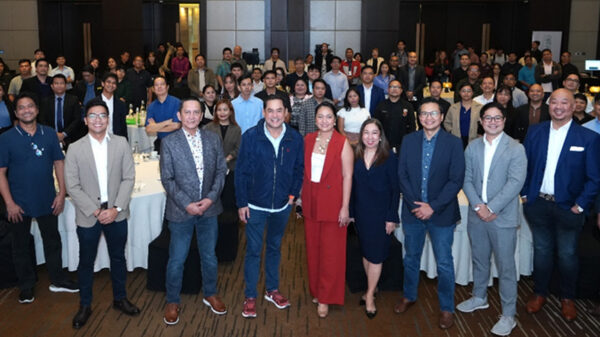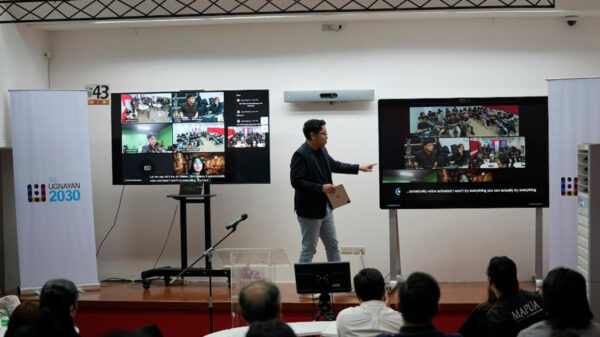Organizations across Asia Pacific are increasingly turning to cloud innovations as the foundation for their digitalization efforts, in a strategic move to become faster, leaner, and better at delivering results for their customers, a new study by Cisco and the Boston Consulting Group (BCG) shows.
Titled The Future of Cloud in Asia Pacific, the report highlights that overall cloud spending is expected to reach $200 billion in the region by 2024 according to Gartner, with investment into the cloud growing at a compound annual growth rate (CAGR) of over 20% since 2018. Singapore is among the top three markets in Asia Pacific with the largest overall IT spend across applications, platforms, infrastructure, and services. Across ASEAN, economies such as Indonesia, Malaysia, the Philippines, and Vietnam will lead the pack in terms of cloud spending growth at a CAGR of 25% by 2024.
Naveen Menon, President, ASEAN at Cisco, said, “Cisco takes a cloud-neutral approach to capture the many benefits that cloud technologies offer. Our full-stack observability capabilities enable our customers to see and manage their infrastructure and applications, connect securely, optimize operations, and improve application experience. Looking ahead, cloud investments will continue to dominate boardroom conversations, with enterprises being the chief architects in their own cloud journey, and in shaping the future of cloud.”
Findings from the study further reveal how organizations in the region are optimizing a mix of public, private and hybrid cloud environments, based on their unique digital, operational, and business needs and several other factors, including regulatory concerns, risk appetite, geographical expansion, and data needs. Notably, the real challenge in today’s digital era is understanding how to manage this transition to cloud in a smooth, seamless, and secure manner.
Prasanna Santhanam, Managing Director and Partner, Singapore, BCG, said, “There is no one-size-fits-all solution in the cloudification roadmap. Business and IT leaders need to be strategic and mindful when navigating the intricacies of cloud innovations and consider the benefits, challenges and risks associated with each strategy in the mid- to long-term. As the focus shifts towards rebuilding better and emerging stronger in the next normal, cloud innovations will no doubt form an integral part of robust business continuity plans.”
The report identifies five archetypes of organizations based on their cloudification journey – namely, the Digital Native, Cloud Optimizer, Cloud Pragmatist, Cautious Adopter and Cloud Onlooker – and explores the characteristics of each archetype to provide analysis and context behind their cloud strategy.
- Digital Native: Organizations that were born in the cloud and built from the ground up on the cloud. Cloud is fully embedded in the business, which is primarily driven by digital- and cloud-first strategies. Public cloud has always been the default choice for them, and through their cloud capabilities, they are able to respond swiftly to the dynamic business landscape with great agility.
- Cloud Optimizer: Such organizations are at the forefront of digital transformation initiatives, having moved away from outdated legacy systems to the cloud. They have mature cloud systems in place, and typically take a public cloud first approach.
- Cloud Pragmatist: Organizations thatare embracing cloud, but generally prefer private over public cloud due to concerns over data and workloads. Due to their priority in maintaining control over their data, risks and costs, public cloud is used to a limited extent for non-business critical workloads, while private cloud is utilized as a strategic asset.
- Cautious Adopter: While digital is rising on their agenda, these organizations take a project-based approach to cloud adoption and do not have an enterprise-wide cloud strategy. Leaders have yet to fully understand and embrace the benefits of cloud offerings, resulting in a lack of strategic direction to define a cloud vision.
- Cloud Onlooker: These organizations do not currently consider cloud as a strategic advantage for their business goals, but as another form of digital infrastructure. They have no active plans to adopt cloud in their business model and strategy, but leaders could introduce isolated cloud solutions if they believe that to be beneficial to the organization.
Based on these five archetypes, the report provides a working tool for business leaders to develop a better strategy to tailor their cloudification journey.
At a virtual media briefing Mr. Menon elaborated, “Each organization’s path will look different, depending on their unique needs and focus areas as they develop their post-pandemic roadmap. While cloud service providers have in the past defined cloud as the aspiration and end goal for customers, it has become abundantly clear that the cloud journey needs to be personalized and tailored to the business and its sector. As organizations navigate the hybrid cloud world and distributed workforce of the future, the challenge is ensuring this shift to cloud is managed efficiently and securely.”
The study illustrates four stages of cloud adoption in which organizations can map their journey against. While organizations do not adhere to a standard, homogenous timeline, they typically require a ‘trigger’ to move on to the next stage. For instance, this could come in the form of shifts in business demand or changes in the organization’s digital agenda.
- Stage 1 – Initial/Ad-hoc: In this initial stage, the organization is not actively pursuing cloud innovations, but might be implementing it on an ad-hoc basis.
- Stage 2 – Experiment: In this phase, cloud solutions are largely experimental and on-premises, with a focus on the improvement of customer experience or leveraging analytics for better insights.
- Stage 3 – Scale: In this phase, cloud strategy is organization-wide and well-defined, with the use of cloud integrated in core business systems.
- Stage 4 – Operate@Scale: In this advanced stage, cloudification occurs across the technology stack, with ongoing programs for technology lifecycle and improvement.
















































































































